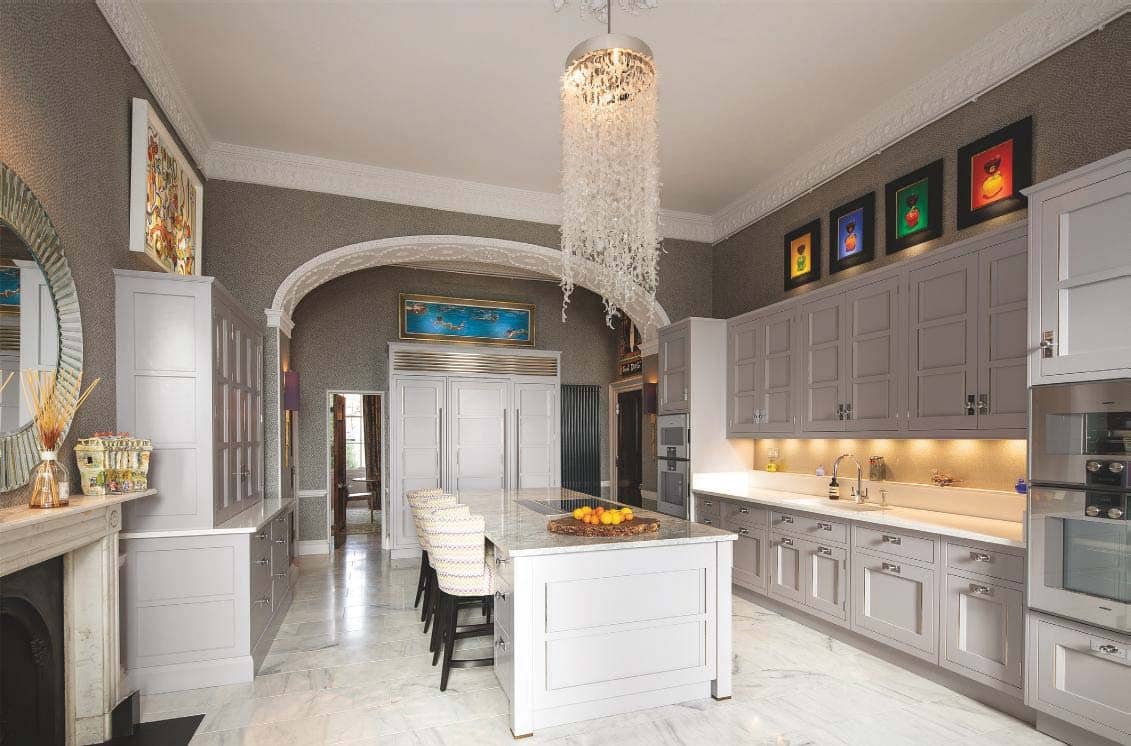
LAUNCHED onto the market in recent weeks at a guide price of £6.5 million through Savills (01225 474501), the exquisite, Grade I-listed 25, Royal Crescent, Bath, is one of only a handful of complete townhouses in single private ownership in this most prestigious of English addresses. The first crescent of terraced houses ever constructed in England, the Royal Crescent was designed by John Wood the Elder and built by his son, John Wood the Younger, who became Bath’s principal architect following his father’s death in 1754.
Between 1767 and 1775, Wood created the 500ft-long curved façade with its 114 Ionic columns. An ingenious sales concept allowed each original purchaser to buy a length of the façade and commission his own architect to build a house behind it to his own specification—thus what may appear to be two houses is occasionally only one. This novel approach to town planning, which contrasts an imposing, uniform, front façade with a mix of differing roof heights and fenestration at the rear— irreverently described as ‘Queen Anne fronts and Mary-Anne backs’—can be found in developments throughout Bath.
At 25, Royal Crescent, the original coach house behind the house has been cleverly converted to a three-bedroom, three-bathroom annexe with a large kitchen/reception room and independent access from Crescent Lane. The complex includes a double garage and a gated courtyard for off-road parking, with the original stables providing additional parking and outbuildings. Immediately behind the house is a raised terrace, with steps leading down to a lawn flanked by stone pathways and herbaceous borders. Beyond this, a ha-ha prevents animals grazing the parkland below from straying onto the more formal garden areas.
This story is from the {{IssueName}} edition of {{MagazineName}}.
Start your 7-day Magzter GOLD free trial to access thousands of curated premium stories, and 9,000+ magazines and newspapers.
Already a subscriber ? Sign In
This story is from the {{IssueName}} edition of {{MagazineName}}.
Start your 7-day Magzter GOLD free trial to access thousands of curated premium stories, and 9,000+ magazines and newspapers.
Already a subscriber? Sign In

Tales as old as time
By appointing writers-in-residence to landscape locations, the National Trust is hoping to spark in us a new engagement with our ancient surroundings, finds Richard Smyth

Do the active farmer test
Farming is a profession, not a lifestyle choice’ and, therefore, the Budget is unfair

Night Thoughts by Howard Hodgkin
Charlotte Mullins comments on Moght Thoughts

SOS: save our wild salmon
Jane Wheatley examines the dire situation facing the king of fish

Into the deep
Beneath the crystal-clear, alien world of water lie the great piscean survivors of the Ice Age. The Lake District is a fish-spotter's paradise, reports John Lewis-Stempel

It's alive!
Living, burping and bubbling fermented masses of flour, yeast and water that spawn countless loaves—Emma Hughes charts the rise and rise) of sourdough starters

There's orange gold in them thar fields
A kitchen staple that is easily taken for granted, the carrot is actually an incredibly tricky customer to cultivate that could reduce a grown man to tears, says Sarah Todd

True blues
I HAVE been planting English bluebells. They grow in their millions in the beechwoods that surround us—but not in our own garden. They are, however, a protected species. The law is clear and uncompromising: ‘It is illegal to dig up bluebells or their bulbs from the wild, or to trade or sell wild bluebell bulbs and seeds.’ I have, therefore, had to buy them from a respectable bulb-merchant.

Oh so hip
Stay the hand that itches to deadhead spent roses and you can enjoy their glittering fruits instead, writes John Hoyland

A best kept secret
Oft-forgotten Rutland, England's smallest county, is a 'Notswold' haven deserving of more attention, finds Nicola Venning